Part of the Series
Beyond the Sound Bites: Election 2016
Now that Bernie Sanders’ campaign is officially over, many of his supporters are adrift. The same week the Sanders’ campaign officially ended, the systematic efforts of the Democratic National Committee (DNC) to sabotage his campaign became a matter of public record, thanks to WikiLeaks. The media largely ignored this scandal and proceeded to fawn over various politicians at the Democratic National Convention, as if they were deities. And Bob Woodward appeared on the August 14 Fox News Sunday, smugly joking that Sanders will now “write his memoirs about the revolution that didn’t quite happen.”
But Sanders supporters should not get disillusioned. It may seem easy to forget, but the primary goal of the Sanders’ campaign was not the presidency, but a “political revolution.” Winning an election was a goal, to be sure, but “revolution” was the goal. The distinction matters. Consider the dictionary definition of revolution: “a forcible overthrow of a government or social order in favor of a new system.” Electing Sanders wouldn’t have been a revolutionary act by itself; the bulk of the work, no matter who won, was always going to take place after Election Day.
Despite losing the primary, Sanders’ campaign planted important seeds that make his larger goals more plausible. This is not primarily because he has pushed Hillary Clinton (rhetorically anyway) to the left, or helped improve the language on the Democrats’ (mostly toothless) platform.
The most significant impact of the Sanders campaign was that it mobilized millions of people using the language of class relations. A Truthout analysis shows a strong correlation between the Sanders campaign and measurable changes in media coverage, public opinion, political debates, public polling, internet trends and more. Sanders lost the election, but he has expanded the debate and helped raise class consciousness.
This is not just a moral victory. As Bertell Ollman, a political science professor at New York University writes, “A socialist revolution requires a class conscious working class.” The campaign, like the Occupy movement that preceded it, shaped much of the national discourse in class terms. Sanders repeatedly lamented the “billionaire class,” and the “massive gap between the very rich and working class Americans.” Occupy was much more pointed, describing class struggle as being between the 99% and the top 1%.
The language isn’t identical. Occupy’s 99% slogan is a reference to the disproportionate economic gains that have gone to the wealthiest 1percent in the last 50 years or so. Sanders is referencing people who struggle to gain financial security in this economy — low/middle income earners, the unemployed, the poor. This describes most of the country, but certainly not 99 percent of it.
Indeed, there are other major differences between Occupy and the Sanders’ campaign, most notably the fact that Occupy paid no attention to electoral politics. But the similarities are important. Both took aim at the ownership class, its greed and its control over the political system. Furthermore, their existence and growth reflects growing discontent and economic anxiety by Americans who want to be engaged in changing the system. This, even more than a progressive president, is required for the kind of social change that could be viewed as revolutionary to occur.
Neoliberalism’s Impact on the Working Class
Class consciousness has ebbed and flowed throughout US history, peaking in the 1920s and ’30s. But it has been extremely limited during the last 50 years of neoliberalism, as wages have stagnated despite a rapid increase in productivity (see figure 1). In the 1970s we saw the “advent of ‘neoliberal’ capitalism,” as Dollars & Sense described it — the “triumph of an economic policy agenda hostile to government economic intervention, social welfare programs, and labor organization,” which was part of a broader shift to the right. But while working class anxiety and financial insecurity both rose during this period, for decades, organized mobilization from the working class did not rise up to resist it.
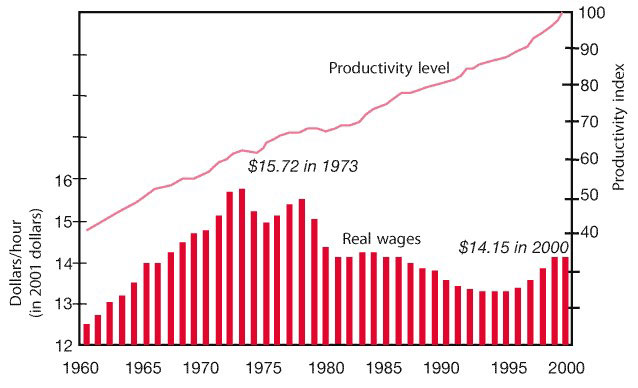 Figure 1. The attack on labor: real wages and productivity in the US, 1960-2000. (Source: Robert Pollin/University of Massachusetts, reprinted with permission)
Figure 1. The attack on labor: real wages and productivity in the US, 1960-2000. (Source: Robert Pollin/University of Massachusetts, reprinted with permission)
Neoliberalism still persists today as the dominant ideology, but it also faces strong, organized resistance — and the Sanders campaign is one reflection of this. “Sanders is trying to break from neoliberalism,” Steve Maher of York University told Truthout in late 2015.
Sanders managed to place socialism — however hazily defined — into the US mainstream for the first time in generations. This was unthinkable in the years before Occupy; and the economic conditions it resisted, created conditions for Sanders to thrive nationally. This, in addition to the millions of dedicated (often young) activists Sanders has mobilized, has laid the groundwork for more Americans to have real conversations about the ways in which US capitalism has failed the working class. The Sanders movement, of course, comes just seven years after the economic system nearly collapsed (spared only by taxpayers’ unwitting subsidization of the big banks’ losses) and five years after the birth of Occupy Wall Street — the most meaningful act of resistance to the neoliberal era in the US since the World Trade Organization protests of 1999 in Seattle.
Sanders’ Impact on Media Coverage
Part of Sanders’ success in influencing the national debate can be seen in his impact on media coverage. The very same corporations that helped fund his opponents, including Hillary Clinton (the largest recipient of donations from Rupert Murdoch’s News Corp) and Debbie Wasserman Schultz (whose largest donor is Comcast), are also owners of most of the dominant media outlets. These outlets effectively set the agenda of US political debate. Sanders, despite being a mainstream Roosevelt-style Keynesian, generally speaking, was viewed as a threat because he challenges the domination of massive centers of power, such as Wall Street, the health insurance sector and, as the DNC leaks proved, the Democratic Party.
It is no surprise that dominant media outlets attempted to marginalize Sanders, sometimes brazenly. Fairness and Accuracy in Reporting (FAIR) documented how The Washington Post published 16 negative stories about Sanders on its website within 16 hours. But Sanders was able — like no other left-leaning candidate in a century — to crack the veneer of the media’s systemic bias in favor of the dominant neoliberal ideology.
This can be seen by examining how media coverage changed during the height of Sanders’ visibility and influence, particularly in the “paper of record,” The New York Times. Consider, for instance, Sanders’ position that the United States should have a national, single-payer health care system that covers the entire population. Having a public, universal system is the norm in the industrialized world, and the US public has long supported one. Despite this, mainstream politicians and pundits have (sometimes literally) portrayed it as a deceptive push toward Soviet-style Bolshevism. But after years of this policy solution being dismissed, Sanders helped to bring it to the mainstream.
Measuring the Times’ news coverage at the peak of the Sanders campaign, from January through the end of March 2016 (when Sanders was competitive in many primaries), is instructive. The paper had 41 articles that referenced the term “single-payer.” This is by far the most attention the newspaper has given the concept in at least a decade (see Figure 2), when there was an average of 16 articles during that same span in the last 10 years. In fact, this 41-article total exceeds the number of articles mentioning single-payer in the previous five years combined (39).
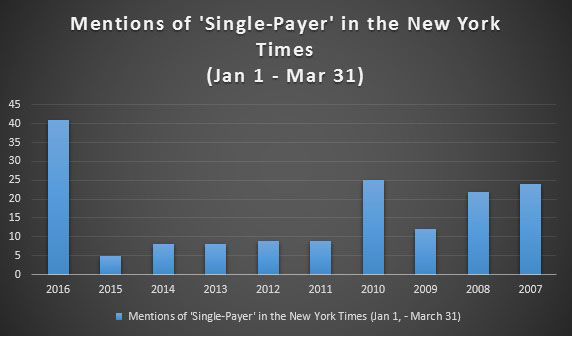 Figure 2: Sanders and coverage of ‘single-payer’ in The New York Times. (Source: Michael Corcoran / Truthout)
Figure 2: Sanders and coverage of ‘single-payer’ in The New York Times. (Source: Michael Corcoran / Truthout)
This correlation between Sanders’ visibility in the public eye and increased attention to crucial issues does not end with health care. As we see in Figure 3, the Times had an increase of articles mentioning the following issues, all major parts of Sanders’ platform: inequality, campaign finance, Medicare for All, socialism, tuition-free college and establishment politics. During the peak of his campaign, the Times referenced inequality in 281 articles. In the previous 10 years, the average number of times this was mentioned in that same span was 105. For campaign finance the ratio was 135 to 94. For “free college,” it was 26 to two. It should be noted, this data is limited to articles that ended up in the print edition, to help account for the increase in online-only publications over the last few years. Of course, as in much of the social sciences, there are infinite variables that can impact media output. But the correlations seen here are strong enough to suggest that Sanders quite likely played a major role in this shift in coverage.
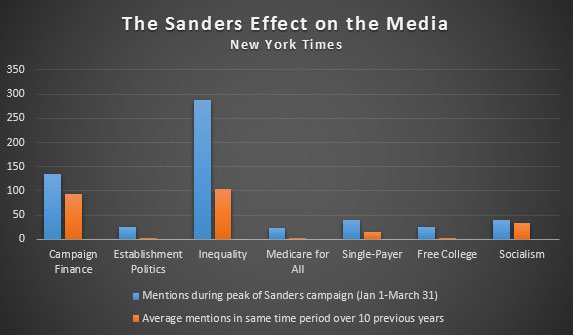 Figure 3: Sanders’ effect on The New York Times on other issues. (Source: Michael Corcoran / Truthout)
Figure 3: Sanders’ effect on The New York Times on other issues. (Source: Michael Corcoran / Truthout)
Also of note is that Sanders’ decision to run for president was not enough for him to radically impact the coverage of issues. The dominant media, as one might predict, had managed to keep Sanders from penetrating the debate for quite a while. It took some hard work and success from his supporters and his voters to force the media to tackle the issues on which his campaign was running.
It wasn’t until the Sanders campaign took off among the public that the media shift became significant. Of the 89 times “single-payer” was mentioned in the Times during the first 12 months of his campaign, 41 of the articles — just under 47 percent of the total — took place in January, February and March (see Figure 4). There was no pronounced spike in coverage of the issue when he announced his candidacy; in the first two months of his campaign, the term was used just five times in total. The correlation suggests strongly that the issue was pushed into the national debate by the campaign when it was at the peak of its reach and influence.
It is important to note that measuring output is not the same as measuring tone or fairness. While studies will surely be done to assess this, it is logical to predict that much of the coverage of the Sanders campaign was negative or aimed at marginalizing his ideas, as Truthout has documented. The fact that Sanders has been able to penetrate the mainstream debate should not be interpreted as confirmation that the media has changed in its structural, institutional biases. However, that these issues were raised at all — even if they were attacked — reflects progress from previous years when they were largely ignored.
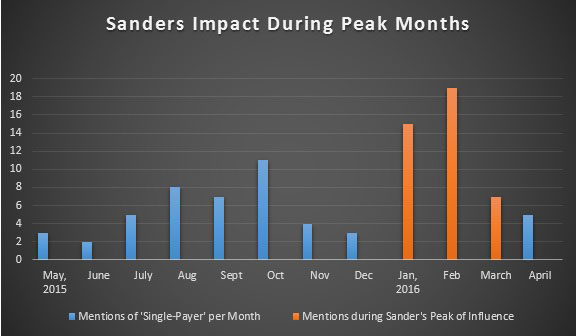 Figure 4: Sanders’ Influence During Peak Months of Campaign. (Source: Michael Corcoran / Truthout)
Figure 4: Sanders’ Influence During Peak Months of Campaign. (Source: Michael Corcoran / Truthout)
In the Shadow of Occupy
It would be remiss not to note that Occupy Wall Street — which emerged about five years ago — had a major impact on the national debate around economic justice. The very concept that “we are the 99%” vs. “the 1%” is the manifestation of class struggle, and such terminology is now commonly used in political discourse, is in large part due to Occupy.
As with the Sanders campaign, we can observe shifts in elite media coverage during the peak of Occupy’s influence. As a previous Truthout analysis showed, in the four months following the start of Occupy, there was a major increase in articles referencing income inequality in the Times, when compared to the coverage of the same time period (September 17-January 17) going back 10 years (see Figure 5). There were 357 references to “income inequality” in the Times for this period, 151 of which mention Occupy. In the previous 10 years, the range was 25-131, with an average of 63.9 references. Similar correlating increases in coverage existed in other media, such as The Washington Post, and major broadcast outlets (see Figures 6 and 7).
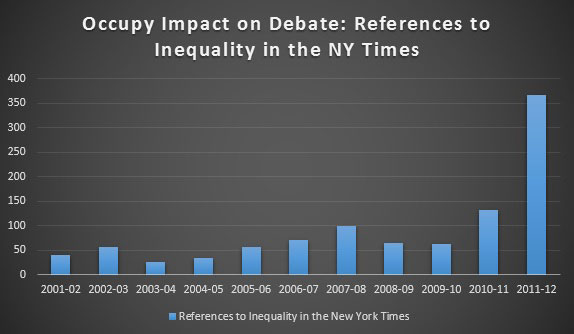 Figure 5: Occupy’s Influence on the Media, Part 1. (Source: Michael Corcoran / Truthout)
Figure 5: Occupy’s Influence on the Media, Part 1. (Source: Michael Corcoran / Truthout)
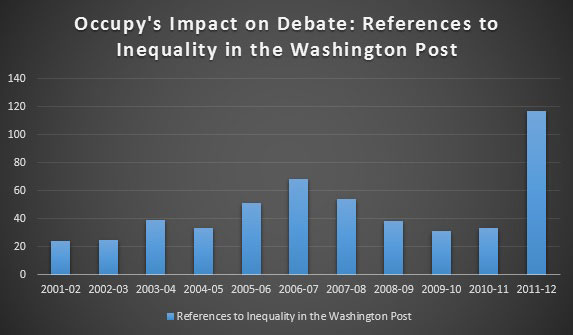 Figure 6: Occupy’s Influence on the Media, Part 2. (Source: Michael Corcoran / Truthout)
Figure 6: Occupy’s Influence on the Media, Part 2. (Source: Michael Corcoran / Truthout)
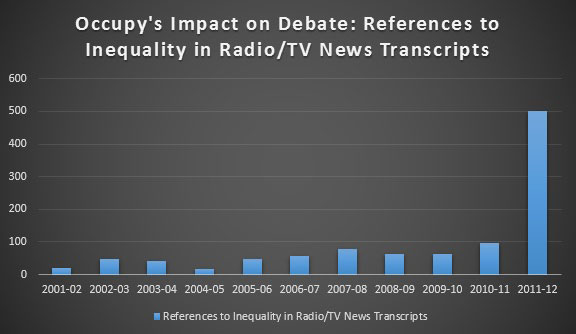 Figure 7: Occupy’s Influence on the Media, Part 3. (Source: Michael Corcoran / Truthout)
Figure 7: Occupy’s Influence on the Media, Part 3. (Source: Michael Corcoran / Truthout)
Just as Woodward mocked Sanders as a failure, many establishment liberals have labeled Occupy in much the same way, complaining that the movement failed to help Democrats win elections or pointing out the fact that the occupations were shut down. Yet Occupy’s impact on the national discourse was undeniable, and it struck fear in the hearts of the establishment.
“I’m so scared of this anti-Wall Street effort. I’m frightened to death,” said Frank Luntz, a famous Republican strategist who focuses on political messaging, during the Occupy movement. “They’re having an impact on what the American people think of capitalism.” Luntz advised GOP candidates not to use the word “capitalism” because members of the public “think capitalism is immoral.”
In many ways, these types of real shifts in public consciousness helped create the conditions for Sanders’ campaign to thrive. The question we face now is what actions and mobilizations have become possible under the conditions the Sanders campaign has helped create.
The Sanders campaign, in contrast to Occupy, was focused on a specific leader and electoral politics (the merits of which have long been debated among the left). But Occupy’s influence on the national debate was no small matter, and it created the conditions for someone like Sanders to emerge. The movements are distinct but they also are undeniably connected by ideology and class-based language.
It would also be remiss not to mention the growth of Black Lives Matters. While not as explicitly focused on class and inequality, it has been a blossoming movement protesting the crises of unarmed Black men being killed by police officers. It has had protests in virtually every major city in the US, writes Khury Peterson-Smith in the International Socialist Review, and has advanced broader issues of Black struggle, including economic ones. The group has worked with Palestine Solidarity Activists and Native Americans, among other alliances, Peterson-Smith reports. Perhaps most impressively, like Occupy, it has refused to capitulate to establishment politicians, including the Democratic Party, who they have protested in confrontational but effective ways. Despite confronting Sanders in a controversial protest in 2015, for instance, by the height of his campaign it was clear they had an impact on his campaign and rhetoric.
How Class Struggle Was Discussed on National TV
The fact that Bernie Sanders would have a major impact on the national debate may have first become obvious during the initial primary debates. Early in the debate schedule Clinton was attacked directly for taking money from Wall Street. She was also pointedly attacked by both Sanders and Martin O’Malley for her weak stance on reinstating the Glass-Steagall Act and her closeness with the likes of Robert Rubin.
Rubin is former Goldman Sachs CEO and Clinton treasury secretary who was an architect of much of the Clinton-era deregulation that has hurt the country. He has long been disliked by the left, but his name was not well known by casual followers of the news. Watching Sanders demand that Clinton explain her Wall Street donations (shamelessly using 9/11 to do so) and her closeness to all of the Rubinites (such as Lawrence Summers and Timothy Geithner) at a debate among Democrats, on national television, was remarkable. This entire discussion about campaign finance and the deregulation of the Clinton years would have previously been out of the “bounds of the expressible.” The whole Sanders campaign may have been worth it if it just produced that one single moment in time.
But putting anecdotes aside, analyzing the transcripts of the nine debates involving Bernie Sanders from 2015-16, compared with the last nine debates of the 2007-08 schedule (compiled by the American Presidency Project) also show that Sanders’ influence on the national conversation extended into the debates in a significant way. (Note: the data uses the last nine of the 2007-08 primary debates, since that primary season had many more debates scheduled — an issue of considerable tension between Sanders and the DNC’s Debbie Wasserman Schultz.)
Most of the issues that are central to Sanders’ platform, such as single-payer health care, campaign finance reform and income inequality were largely ignored by all the candidates in 2008. However, during the nine debates including Sanders in 2015-16, “single-payer” or “Medicare for All,” was mentioned 38 times (see Figure 8). In contrast, these terms were only used five times in the 2008 debates, and four of these references were when Clinton used the term as a pejorative, to hurt then-Sen. Obama (who used to support single-payer, before becoming a national figure).
Campaign finance was another major staple of Sanders’ campaign. During the 2015-16 debates, the words “campaign finance reform,” or “campaign donations,” or “corporate donations,” (most of them from Sanders) were mentioned 79 times (see Figure 8). Virtually every mention was in the context of the grip corporate America has on the US political system. In the 2008 debates, the issue was ignored entirely; it was mentioned only one time in the final nine primary debates. During each debate featuring Sanders, more than 10 million viewers were getting a civics lesson in just how much influence corporations have over the US political system in general, and over Hillary Clinton in particular. Educating the public on how wealthy elites rig the system is a clear case of raising class consciousness, and as we have seen before, these conversations did not take place in previous debates.
Indeed, the mention of there being a “working class” that is exploited by a billionaire class was a major theme of the debates in 2016. During the 2016 debates the phrases “working class,” or “working Americans,” was mentioned 79 times — an average of 8.7 times a debate. In the previous contested Democratic primary these phrases were used just 29 times. (Also see Figure 8). Again, not all of this can be attributed to Sanders; the 2008 Democratic primary took place prior to the 2008 economic crisis, and foreign policy and Iraq were bigger issues during the primary stage of the election. There can be no doubt, however, that Sanders put many of the interests of “workers” front and center during his debates.
Politicians, including Sanders, also still talk about the needs of the “middle class,” but this term — often used by politicians to seem empathetic to everyone but the poor — is borderline useless these days. There is no consensus metric as to how to measure if someone is “middle class,” and estimates from even progressive economists, such as Robert Reich, have suggested someone making $25,500 annually — the equivalent of only $12.50 an hour — would be on the low end of the middle class. This is clearly problematic and when 76 percent of the country lives “paycheck to paycheck,” as CNN has reported, it is hard to find a lot of room for a middle class to exist. Consequently, according to Pew Research, fewer people than ever before view themselves as being in the middle class.
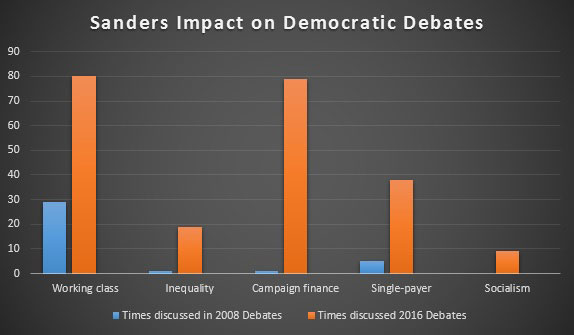 Figure 8: Sanders Impact on Democratic Primary Debates. (Source: Michael Corcoran / Truthout)
Figure 8: Sanders Impact on Democratic Primary Debates. (Source: Michael Corcoran / Truthout)
Class Curiosity: An Analysis of Internet Search Trends
It seems all of these civics lessons on television had a strong impact on the curiosity of Americans on the internet. An increased interest in class relations, single-payer health care, socialism and other key tenets of the Sanders campaign was also evident in 2015 and 2016. Google Trends enables users to examine search term trends. The results show that during the Sanders campaign there was a sizable increase of searches for terms like socialism, inequality and single-payer.
Consider the trend we see in Image 1. Unsurprisingly we see searches for “Bernie Sanders” go up dramatically as his campaign reached its peak. What is more notable, however, is that those using Google Search in the US also used the term “socialism” more than at any time since Google started showing this kind of data. And the blue line in the image (representing searches for “socialism”) corresponded in a nearly virtually identical pattern to the red line (representing searches for “Bernie Sanders”).
Google Trends also reveals significant increases in searches from US users for the terms “income inequality,” “Medicare for All,” “paid family leave, “neoliberalism” and “free tuition” (see Images 2-6).
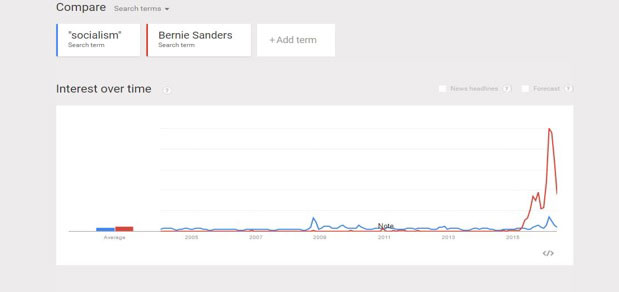 Searches for “Socialism,” “Bernie Sanders.” (Source: Google Trends)
Searches for “Socialism,” “Bernie Sanders.” (Source: Google Trends)
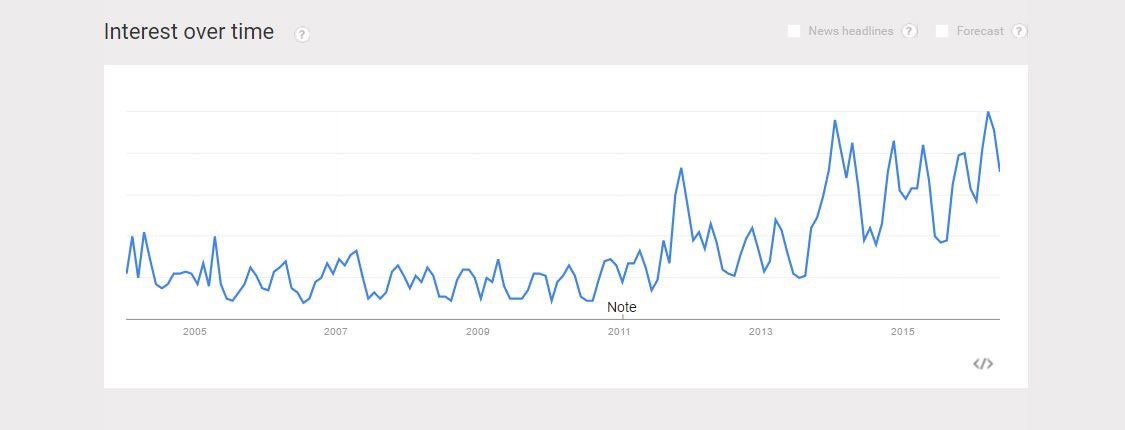 Searches for “income inequality.” (Source: Google Trends)
Searches for “income inequality.” (Source: Google Trends)
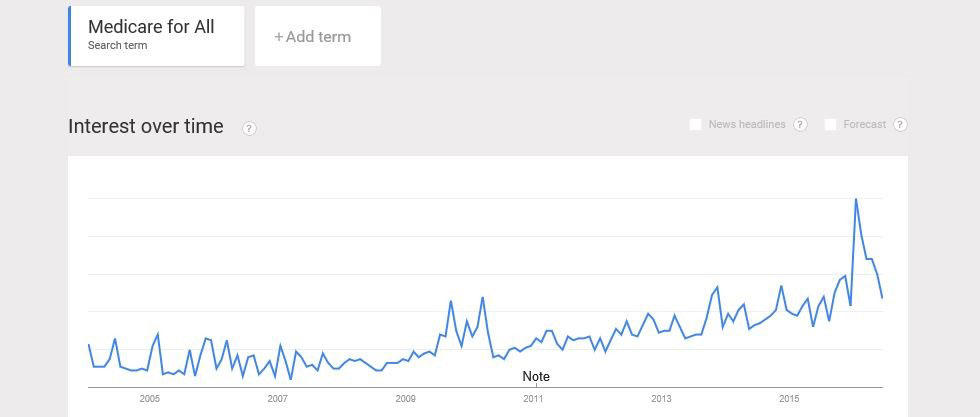 Searches for “Medicare for All.” (Source: Google Trends)
Searches for “Medicare for All.” (Source: Google Trends)
 Searches for “paid family leave.” (Source: Google Trends)
Searches for “paid family leave.” (Source: Google Trends)
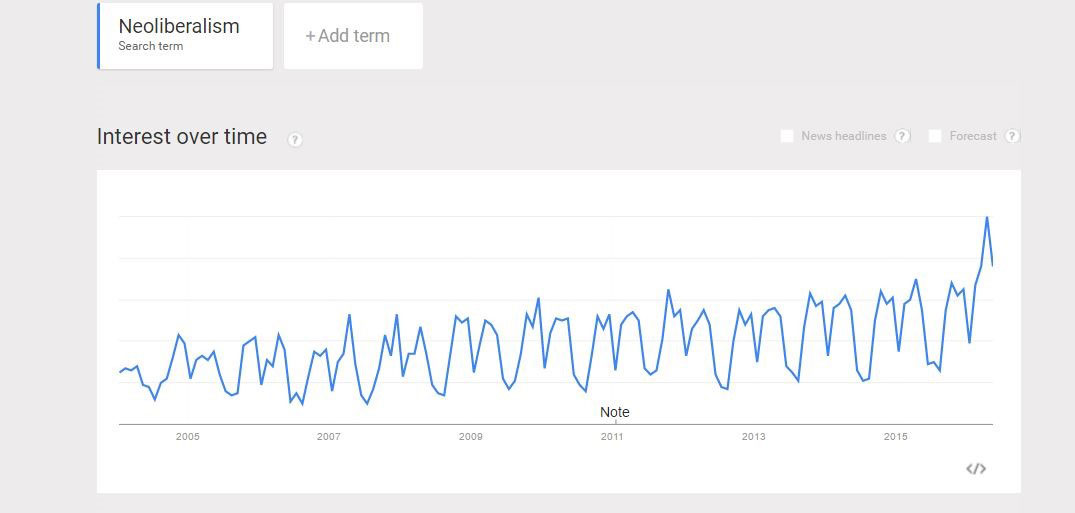 Searches for “neoliberalism.” (Source: Google Trends)
Searches for “neoliberalism.” (Source: Google Trends)
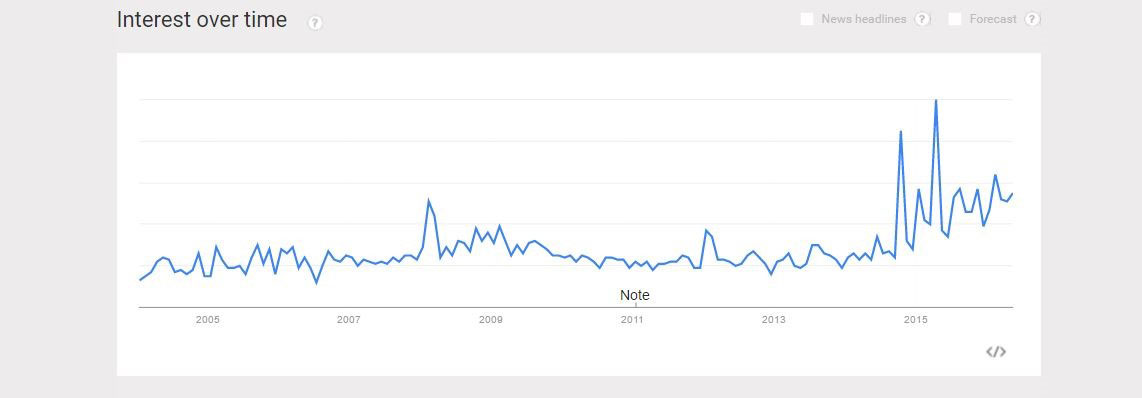 Searches for “free tuition.” (Source: Google Trends)
Searches for “free tuition.” (Source: Google Trends)
All of this data suggests that the Sanders campaign had a tangible influence on public interest in and curiosity about issues that have long been ignored by establishment media and politicians. And this is in addition to the simple fact that Sanders earned 13 million votes, won 23 states, broke fundraising records through small donations and polled extremely well nationally, versus Clinton and Republican nominee Donald Trump. And just like during Occupy, this scenario made many elites nervous. Luntz, the Republican strategist who had expressed anguish over Occupy, also expressed his fear about Sanders’ nefarious influence, saying he was unable to believe that an “avowed socialist” was “drawing more than 10,000 people per appearance.”
Is This a “Turning Point in American Life?”
In February 2012, David Meyer, a sociology professor at the University of California, Irvine, and author of the book, The Politics of Protest: Social Movements in America, said in an interview about Occupy with NPR: “There’s a better than reasonable chance that we are at this turning point in American life and American politics.” He said this in light of the widespread discontent expressed through the social movements of the time in the aftermath of an economic crisis that exposed how rigged the financial system was.
Perhaps Meyer was right to suspect change was afoot. Since he made that comment, Thomas Piketty’s critique of capitalism has become a global best-seller and a self-described “socialist” came close to beating Hillary Clinton — arguably one of the country’s most powerful politicians — in a major primary. Meanwhile, polls since 2011 have shown that young people prefer socialism to capitalism. Since the Sanders campaign grew, this preference became true among Democratic voters of all ages. In sum, according to a Gallup Poll from June, 47 percent of the country would consider voting for a socialist candidate — all of this is despite decades of post-Cold War, neoliberal dogma disparaging the term socialism while turning US “free-market” economics into a belief held with almost religious fervor among elites.
Years before his death in 2010, radical historian Howard Zinn wrote an essay about how he stays positive in a world filled with so much injustice. “I keep encountering people who, in spite of all the evidence of terrible things happening everywhere, give me hope. Wherever I go, I find such people, especially young people, in whom the future rests,” he wrote in A Marvelous Victory. “But they tend not to know of one another’s existence…. I try to tell each group that they are not alone, and that the very people who are disheartened by the absence of a national movement are themselves proof of the potential for such a movement.”
Zinn’s statements are a reminder that, just a few years ago, there was no national movement for revolutionary change. The very existence of which, his friend Noam Chomsky would later say at Occupy Boston, was “the dream of his life.” Zinn didn’t live to see that dream but everyone who participated in, or even witnessed from afar, the Sanders’ campaign and Occupy knows that we finally have a national movement, which has found success in the streets, in the media and in the voting booths. This is a major development. People fighting for social change know they are not alone. And the boulder is much further up the mountain than it may seem at times.
A progressive president would surely be helpful in bringing about social change. But a working class with strong class consciousness is vital for such change to occur. What matters isn’t who the president is so much as what has become of the ethos of US politics today that has made Sanders (and Occupy) possible. The Sanders campaign is over. But, there are many signs suggesting that the political revolution he seeks is just getting started.
Join us in defending the truth before it’s too late
The future of independent journalism is uncertain, and the consequences of losing it are too grave to ignore. To ensure Truthout remains safe, strong, and free, we need to raise $27,000 in the next 24 hours. Every dollar raised goes directly toward the costs of producing news you can trust.
Please give what you can — because by supporting us with a tax-deductible donation, you’re not just preserving a source of news, you’re helping to safeguard what’s left of our democracy.